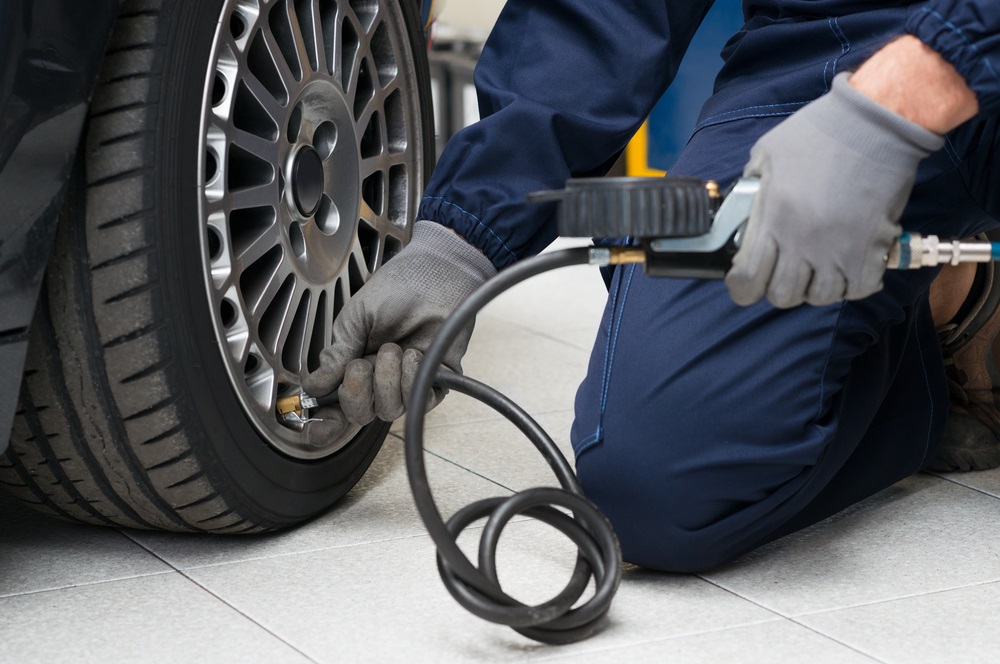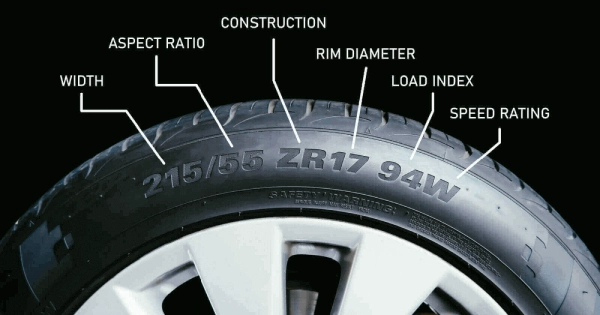Top 10 Insights on Tire Ratings Explained
Unveil the secrets behind tire ratings with our top 10 insights, ensuring you make informed choices for your vehicle.

Understanding tire ratings is crucial for every vehicle owner seeking to make informed decisions. Tire ratings explained properly can guide you to choose the right tires, ensuring safety, efficiency, and optimal performance on the road. Whether you are replacing worn-out tires or looking to upgrade, comprehending these ratings can save you time and money while improving your driving experience.
Tire Ratings Explained: Unveiling the Secrets Behind the Numbers
When it comes to selecting the right tires for your vehicle, knowing what the numbers and symbols mean can feel like deciphering secret codes. Tire ratings encompass a range of performance indicators, from tread depth to fuel efficiency. They offer a glimpse into how a tire behaves under various conditions, its load capacity, and even its impact on fuel economy. Hence, understanding these ratings is not just about compliance; it's about enhancing your vehicle's safety, handling, and efficiency. Let’s dive into the top insights that can help demystify tire ratings for you.
List of Top Choices
- Tire Tread Depth: Grip and Traction Galore
- Tire Age: More Than Just Numbers
- Tire Pressure: Striking the Perfect Balance
- Tire Load Index: Bearing the Burden
- Tire Speed Rating: Matching Your Need for Speed
- Tire Aspect Ratio: A Matter of Proportions
- Tire Construction: The Build Behind the Drive
- Tire Brand and Model: Beyond the Label
- Tire Fuel Efficiency: Rolling Towards Savings
- Tire Warranty: Your Safety Net
Tire Tread Depth: Grip and Traction Galore

- The deeper the tread, the better the grip and traction.
- Essential for wet or snowy conditions.
- Measured in 32nds of an inch.
Tire tread depth is a critical factor in ensuring your vehicle's safety and performance. The depth of the tread affects how well your tires can grip the road, especially in adverse weather conditions like rain or snow. A deeper tread means better traction, reducing the risk of accidents. It's important to check the tread depth regularly, as worn-out tires significantly decrease handling and braking capabilities. Remember, tires are the only part of your vehicle that actually touches the road, so their condition is paramount to your safety.
Tire Age: More Than Just Numbers

- Tires have a lifespan, typically around 6 years.
- Over time, rubber degrades, affecting performance and safety.
- Manufacture date can be found on the tire's sidewall.
The age of a tire plays a crucial role in its performance and safety. As tires age, the rubber compounds break down, which can lead to reduced traction and increased risk of failure. Even if a tire appears to have plenty of tread left, old tires can still be dangerous. It's recommended to replace tires every six years, regardless of tread wear. Check the manufacture date on your tire's sidewall to ensure your tires are still within a safe age range. Ignoring the age of your tires can compromise your vehicle's handling and your safety on the road.
Tire Pressure: Striking the Perfect Balance

- Correct tire pressure ensures optimal performance and fuel efficiency.
- Underinflated tires can lead to premature wear and accidents.
- Overinflated tires may reduce traction and increase the risk of blowouts.
Maintaining the correct tire pressure is essential for ensuring your vehicle operates safely and efficiently. Not only does proper inflation extend the life of your tires by preventing uneven wear, but it also improves fuel efficiency and handling. Underinflated tires generate more heat due to excessive sidewall flexing, leading to premature wear, tread separation, and even blowouts. Conversely, overinflated tires can make your ride more harsh and decrease the amount of tire in contact with the road, reducing traction. Regular checks with a pressure gauge can help you keep your tires in the ideal pressure range.
Tire Load Index: Bearing the Burden

- Indicates the maximum weight a tire can safely carry.
- Crucial for vehicles that carry heavy loads.
- Higher numbers indicate a greater carrying capacity.
The tire load index is a numerical code associated with the maximum weight a tire can support when properly inflated. Choosing a tire with an appropriate load index is particularly important for vehicles that frequently carry heavy loads or tow trailers. A tire's load index affects not only the vehicle's carrying capacity but also its handling and stability. Ensure your tire’s load index matches or exceeds the requirements of your vehicle to avoid the risks associated with overloading, including tire failure and reduced control while driving.
Tire Speed Rating: Matching Your Need for Speed

- Indicates the maximum speed a tire is designed to handle.
- Higher ratings translate to better handling at higher speeds.
- Choose a tire with a speed rating that meets or exceeds your vehicle's top speed.
The tire speed rating is an important consideration for both safety and performance. This rating ensures that your tires can safely handle the speeds at which you intend to drive your vehicle. A tire with a speed rating too low for your vehicle may lead to excessive heat build-up, leading to premature wear and reduced tire life. On the other hand, a tire with a speed rating higher than necessary may mean you're spending more money without any tangible benefit to your normal driving conditions. Matching the tire's speed rating with your vehicle's performance characteristics can optimize handling, tire wear, and safety.
Tire Aspect Ratio: A Matter of Proportions
![]()
- The ratio of the tire's section height to its section width.
- A lower aspect ratio equals better handling and performance.
- Can affect ride comfort; lower ratios often result in a harsher ride.
The tire aspect ratio is a crucial dimension that affects a vehicle's handling and comfort. It's represented as a percentage in the tire size designation, indicating the height of the tire's cross-section relative to its width. Tires with a lower aspect ratio, commonly referred to as low-profile tires, provide greater handling and stability, making them a favored choice for performance vehicles. However, they can also make the ride noticeably firmer. When selecting new tires, consider how the aspect ratio fits your driving needs and comfort preferences to ensure the best balance between performance and ride quality.
Tire Construction: The Build Behind the Drive

- Materials and techniques used in tire production can affect performance and cost.
- Steel-belted radial tires offer durability and longevity.
- The construction type influences handling, fuel efficiency, and comfort.
The construction of a tire significantly impacts its overall performance, including durability, handling, and fuel efficiency. Most modern tires are radial tires, which have layers of fabric cords and steel belts that run at a right angle to the tread, providing strength and stability. This construction offers a comfortable ride, improved tread life, and better fuel economy due to reduced rolling resistance. The materials used, such as rubber compounds and reinforcement filaments, also play a vital role in the tire's characteristics. Understanding the basics of tire construction can help you select tires that best suit your vehicle's requirements and your driving habits.
Tire Brand and Model: Beyond the Label

- Different brands and models provide varying levels of quality, performance, and price.
- Research and comparisons are essential to find the best option.
- Brand reputation can reflect on durability and after-sales support.
While tire brand and model might seem like just another decision to make, they can significantly influence your driving experience. Brands with a solid reputation in the industry often offer superior quality and innovation, resulting in better performance, safety, and durability. However, this doesn't mean you should overlook lesser-known brands, as many offer excellent value and performance. The key is to research and compare different options based on your specific needs, such as driving conditions, vehicle type, and budget. Customer reviews, professional tests, and ratings can all provide valuable insights into how tires perform in real-world conditions.
Tire Fuel Efficiency: Rolling Towards Savings

- Tires with better fuel efficiency can significantly reduce fuel costs over time.
- Low rolling resistance reduces the energy needed to move your vehicle.
- Choosing energy-efficient tires supports a greener driving experience.
Fuel-efficient tires are designed to lower the energy loss as a tire rolls, decreasing the required rolling effort—and thus fuel consumption. This is known as low rolling resistance. Such tires can make a noticeable difference in your vehicle's fuel economy, leading to savings at the pump and a reduced environmental impact. While they may come with a higher upfront cost, the long-term savings and benefits often offset the initial investment. When shopping for new tires, considering fuel efficiency along with other performance factors can lead to both financial and ecological rewards.
Tire Warranty: Your Safety Net

- Warranties can cover defects and premature wear.
- Understanding warranty terms is crucial before making a purchase.
- Different manufacturers offer varying levels of coverage.
A tire warranty can provide peace of mind, offering protection against manufacturing defects or premature wear. However, the coverage and terms of warranties vary significantly among manufacturers, so it's essential to understand what is and isn't covered before making a purchase. Some warranties may offer pro-rated replacement for a certain number of miles, while others might include free repairs or replacements under specific conditions. Always review the warranty specifics to ensure it meets your expectations and needs. A good warranty not only reflects the manufacturer's confidence in their product but also provides a safety net for consumers.
In conclusion, understanding tire ratings and characteristics is essential for making informed choices that enhance safety, performance, and value. From tread depth and tire age to fuel efficiency and warranties, every aspect plays a role in how tires will perform under different conditions. By considering these top insights, you’re better equipped to select tires that match your driving preferences, budget, and the demands of your vehicle, ensuring a safer and more enjoyable driving experience.
What's Your Reaction?








































































